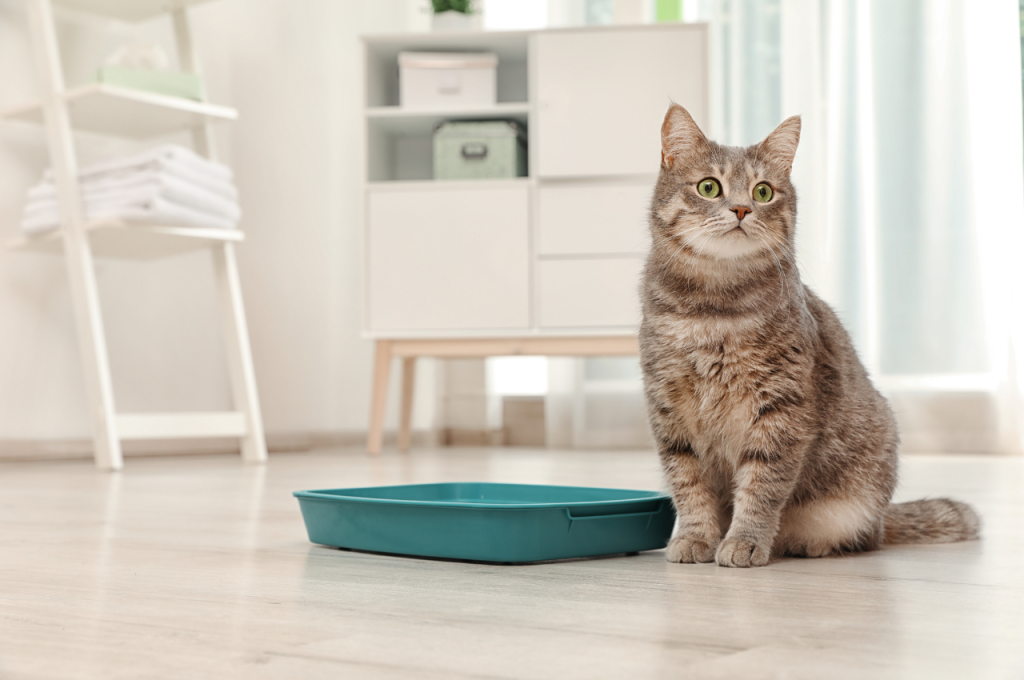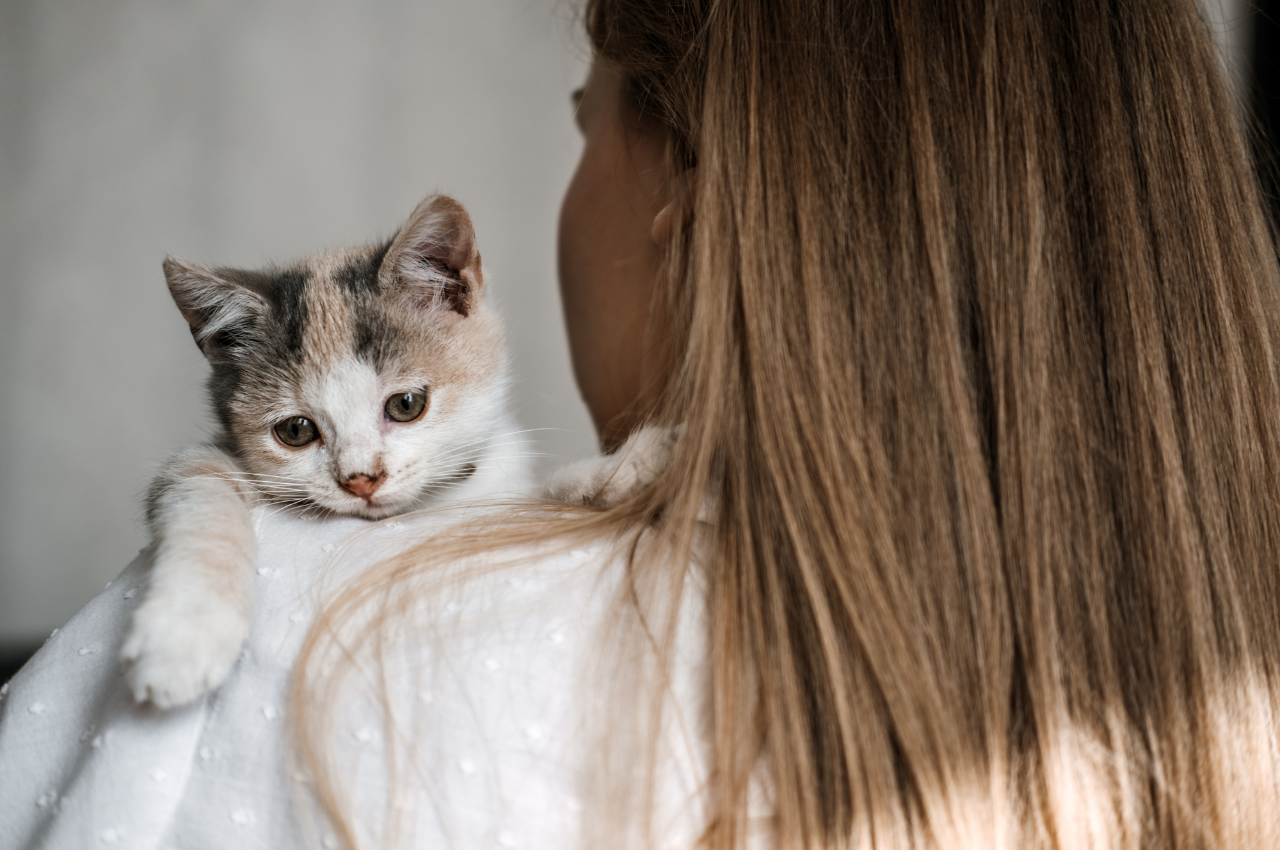To make an adopted cat feel comfortable, provide a quiet and safe space for them to retreat to, gradually introduce them to the rest of the house, and give them plenty of time and patience to adjust to their new surroundings. Creating a comfortable environment for your newly adopted cat is crucial to help them feel safe and secure in their new home.
Cats are sensitive creatures, so it’s important to give them a space where they can relax and feel at ease. By following these steps, you can help your adopted cat settle in and feel comfortable in their new surroundings.
Welcoming Your New Feline Friend
Welcoming your new feline friend into your home is an exciting experience. Start by creating a safe, cozy space for them to settle in, complete with a comfy bed, food, water, and a litter box. Give your cat time to adjust to their new surroundings, and approach them calmly and patiently. Gradually introduce toys and gentle interactions to build trust, making your home feel like a loving and secure environment for your new companion.

Creating a Safe Space
When bringing your adopted cat home, it’s crucial to create a safe space where they can gradually acclimate to their new environment. This sanctuary should be quiet and secluded, with their bed, litter box, food, and water. A cozy hiding spot such as a covered cat bed or a cardboard box can provide a sense of security. Placing soft blankets and toys within the space will make it more inviting and comforting.
First Day Home: Gentle Introductions
Upon bringing your new cat home, allow them to explore their designated safe space without any forced interactions. Gentle introductions to family members should be done one at a time, ensuring a calm and quiet environment. Avoid overwhelming the cat with too much attention and give them the freedom to approach at their own pace.
Setting up The Perfect Environment
Setting up the perfect environment for your newly adopted cat is crucial in helping them feel comfortable and secure in their new home. By creating a space tailored to their needs, you can ease their transition and build a strong foundation for a happy and healthy life together.
Choosing The Right Room
When bringing your adopted cat home, it’s essential to select a quiet and secluded room where they can acclimate at their own pace. This room should be equipped with all the necessary comforts and amenities to help them feel safe and relaxed.
Essential Supplies for Comfort
Creating a comfortable environment for your adopted cat involves providing essential supplies that cater to their physical and emotional needs. This includes a cozy bed or blanket, a litter box, food and water bowls, scratching posts, and interactive toys to keep them engaged and entertained.
Feeding and Nutrition
Feeding and nutrition play a crucial role in making an adopted cat feel comfortable in its new environment. Providing the right diet and creating a feeding routine can help your new feline friend adjust and thrive in its new home.
Finding The Right Diet
When introducing your adopted cat to its new home, ensure you provide high-quality cat food that meets its nutritional needs. Look for products that are specifically formulated for the cat’s age, size, and any specific health requirements it may have. Consider consulting with a veterinarian to determine the most suitable diet for your cat’s individual needs.
Scheduled Feeding Times
Establishing a consistent feeding schedule is essential for your adopted cat’s comfort and well-being. Set regular feeding times and stick to them to create a sense of routine and predictability for your cat. By doing so, you can help alleviate any anxiety your cat may have about mealtime and provide a stable environment that promotes a feeling of security.
Building Trust and Bonding
Making an adopted cat feel comfortable involves building trust and bonding. Providing a safe and quiet space, introducing them to new surroundings gradually, and offering plenty of love and attention can help your new furry friend settle in and feel at home.
Patience Is Key
Building trust with an adopted cat requires patience and understanding.
Interactive Play Sessions
Engage in interactive play sessions to strengthen the bond with your cat.
Health and Well-being
Making an adopted cat feel comfortable is essential for their health and well-being. It is important to create a safe and secure environment, establish a routine, provide plenty of playtime and affection, and give them time to adjust to their new surroundings.
Initial Veterinary Visit
The first step in ensuring your newly adopted cat’s health and well-being is to schedule an initial veterinary visit. This visit will help you understand your cat’s overall health status and identify any underlying medical issues. During the visit, the veterinarian will perform a physical exam, run diagnostic tests, and recommend necessary treatments. It’s important to follow the veterinarian’s advice and treatment plan to keep your cat healthy.
Routine Care and Vaccinations
Regular veterinary visits are essential for your cat’s health and well-being. Routine care should include regular check-ups, vaccinations, and preventative care, such as flea and tick control. Your veterinarian can recommend a vaccination schedule based on your cat’s age, health status, and lifestyle. Vaccinations are important to prevent diseases such as feline leukemia, rabies, and distemper. It’s also important to keep up with routine care at home. This includes grooming, feeding a balanced diet, and providing fresh water. Regular playtime and exercise can also help keep your cat healthy and happy. Making your adopted cat feel comfortable and safe in their new home is important for their health and well-being. By taking your cat for an initial veterinary visit, following routine care guidelines, and providing a loving and safe home, you can help ensure your cat’s health and happiness for years to come.
Litter Box Training
To help an adopted cat feel comfortable, start litter box training early with a quiet, private spot. Use unscented litter and clean the box regularly. Provide positive reinforcement and patience during the training process to create a stress-free environment for your new feline friend.

Litter box training is an essential part of making an adopted cat feel comfortable in their new home. It can be a challenging process, but with some patience and guidance, you can help your cat learn to use the litter box properly. Here are some tips for litter box training your new feline friend.
Selecting The Ideal Location
Choosing the right location for your cat’s litter box is crucial. It should be placed in a quiet, private area of your home, away from their food and water bowls. Cats prefer a clean and quiet space to do their business. If you have more than one cat, make sure you have enough litter boxes for each cat, plus one extra. This will ensure that each cat has their own space to use the litter box.
Encouraging Proper Use
Encouraging proper use of the litter box is essential to make your cat feel comfortable. When you first bring your cat home, show them where the litter box is located. Place your cat in the litter box several times a day, especially after they eat or wake up from a nap. Reward your cat with treats and praise each time they use the litter box correctly. Be patient and do not punish your cat if they have an accident outside the litter box. Instead, clean up the mess and try again later. Here are some additional tips to help with litter box training:
- Use unscented litter so that your cat is not overwhelmed by the smell.
- Clean the litter box daily to maintain cleanliness and prevent odors.
- If your cat is not using the litter box, try a different type of litter or litter box.
- Consider using a litter attractant to encourage your cat to use the litter box.
With some patience and a little effort, you can successfully litter box train your adopted cat and help them feel comfortable in their new home. Remember to reward your cat for their good behavior and be patient if they make mistakes. With time, your cat will learn to use the litter box correctly, and you’ll both be happier for it.
Socialization and Behavior
Help your newly adopted cat feel comfortable by providing a safe and quiet space, allowing them to explore at their own pace, and offering plenty of love and patience. Socialization and understanding their behavior will help create a positive environment for your new furry friend.

Introducing To Other Pets
When introducing an adopted cat to other pets, slowly integrate them in short and supervised sessions. Create positive interactions with treats and toys.
Handling Unwanted Behaviors
Address unwanted behaviors like scratching by providing appropriate scratching posts. Redirect their behavior and reward positive actions. Socialization and Behavior Creating a comfortable environment for an adopted cat involves gradual introductions to other pets. Ensure positive interactions to build trust. Encourage interaction through play and treats. Monitor body language for signs of stress or aggression. Establish a routine to help the cat feel secure. Provide hiding spots and vertical space for exploration. Maintain a calm and consistent approach to reinforce positive behaviors. Offer toys and enrichment activities. Monitor interactions closely and seek professional advice for challenging behaviors. Remember, patience and positive reinforcement are key in helping an adopted cat adjust.
Ensuring Long-term Happiness
Regular Check-ups
- Ensure regular veterinary check-ups to monitor health.
- Vaccinations should be up-to-date for preventive care.
Continued Affection and Attention
Provide consistent love and attention for emotional well-being.
- Engage in playtime and interactive activities.
- Establish a routine for stability and security.
Frequently Asked Questions
How Can I Make My Adopted Cat Feel Comfortable In Its New Home?
To make your adopted cat feel comfortable, create a safe space with a cozy bed, litter box, and scratching post. Provide a gradual introduction to other pets and family members, offering treats and gentle interactions. Give them time to adjust, ensuring a consistent routine and plenty of love and patience.
What Are Some Ways To Bond With An Adopted Cat?
Bond with your adopted cat by spending quality time together. Engage in interactive play sessions, offer treats as rewards, and provide gentle grooming. Use positive reinforcement to build trust and create a strong bond. Respect their boundaries and allow them to initiate affectionate contact when they feel comfortable.
How Can I Help My Adopted Cat Adjust To Its New Environment?
Help your adopted cat adjust by creating a calm and predictable environment. Provide hiding spots, vertical spaces, and toys for mental stimulation. Gradually introduce them to different areas of the house, one room at a time. Use pheromone sprays or diffusers to reduce stress and establish a routine with regular feeding and play times.
How Long Does It Take For An Adopted Cat To Feel Comfortable?
The time it takes for an adopted cat to feel comfortable varies. Some cats may adjust quickly within a few days, while others may take weeks or even months. Patience is key during this transition period. Allow your cat to set the pace and provide them with a safe, loving environment to help speed up the process.
Conclusion
Ensuring your adopted cat feels comfortable is essential for a harmonious home. By implementing these tips, you can create a safe and welcoming environment for your new feline companion. Remember, patience and understanding are key to helping your cat adjust and thrive in their new forever home.
